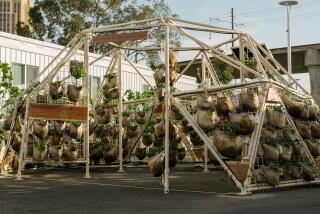The Floor Show
- Share via
In a flurry of paper--and an invisible torrent of electronic bytes--L.A.’s stock exchange does its small part each working day to power the mill wheel of capitalism.
The little-known Pacific Stock Exchange, housed Downtown in a windowless cavern of a room at 233 S. Beaudry Ave., is one of five regional stock exchanges nationwide that compete with the giant New York Stock Exchange. The PSE’s roots extend to 1899, when the raucous L.A. Stock Exchange was born. A 1957 merger with San Francisco’s stock exchange created the current PSE.
Although the physical matching of stock buy and sell orders has become a blink-of-an-eye computer function, exchange floors have survived to preserve human oversight of the process, especially for the nation’s biggest stocks.
At the PSE, 42 traders, known as “specialists,” attempt to snare the best prices for customers’ orders by tracking and abetting the market’s ebb and flow through the day--an often chaotic dance of buyers and sellers whose every step is instantaneously imprinted on computer screens nationwide.
For a specialist on the PSE floor, success is measured in fractions--for example, the sale of 100 shares of stock for a mere one-eighth of a dollar more, per share, than the customer might have gotten at the NYSE.
On a typical day, the L.A. PSE and its sister San Francisco floor execute 60,000 trades, totaling 9 million shares of stock worth $230 million.
Yet whether the PSE and other stock exchanges can survive in the long run remains a subject of much debate on Wall Street. Even now, proponents of all-electronic trading systems argue that exchange floors--and human market traffic cops--are relics of a bygone era.
More to Read
Inside the business of entertainment
The Wide Shot brings you news, analysis and insights on everything from streaming wars to production — and what it all means for the future.
You may occasionally receive promotional content from the Los Angeles Times.










